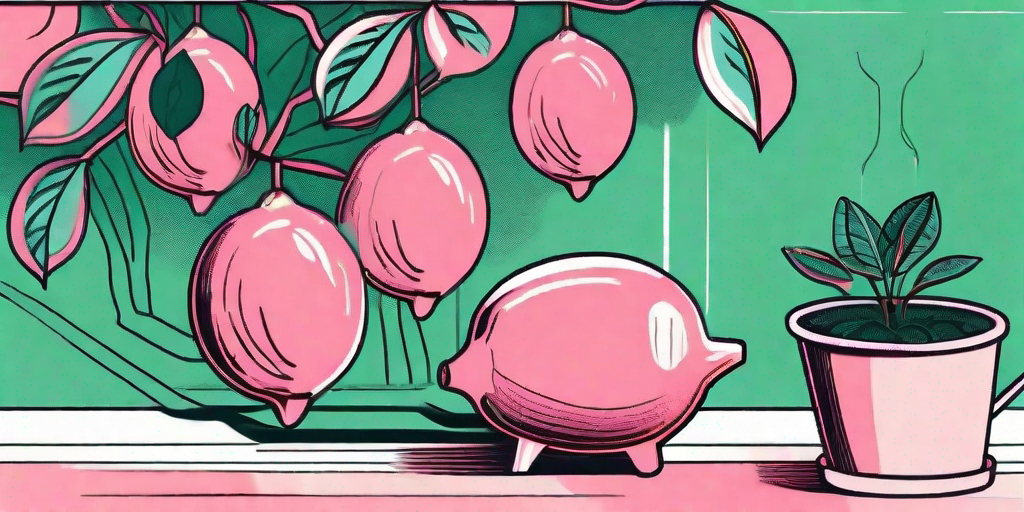
Welcome, green thumbs, citrus enthusiasts, and those who simply adore the color pink. If you've ever wondered about the existence of a fruit that's as sweet as it is sour, and as unique as it is beautiful, then you're in for a treat. Today, we're diving into the world of pink lemon trees. Yes, you read that right. Pink. Lemon. Trees.
What on Earth is a Pink Lemon Tree?
Before we delve into the nitty-gritty of growing these vibrant beauties, let's first understand what a pink lemon tree is. Also known as the variegated pink lemon or Eureka lemon, this citrus tree is famous for its striped yellow and green foliage, and most notably, its pink-fleshed lemons. These lemons are not only a feast for the eyes but also offer a tangy flavor with a hint of sweetness, making them a favorite among citrus lovers.
Originally from California, these trees are now grown in various parts of the world. They are hardy, evergreen, and can reach up to 20 feet in height. But don't worry, they can also be grown in pots and kept at a manageable size for those who are space-challenged.
How to Grow a Pink Lemon Tree
1. Choosing the Right Spot
Like any diva, the pink lemon tree needs its spotlight. This means a location with plenty of sunlight. Ideally, it should receive at least six hours of sunlight each day. So, if your garden is more like a vampire's lair, this might not be the tree for you.
Additionally, these trees prefer well-drained soil. So, if your garden is more like a swamp, it's time to get your hands dirty and improve that soil drainage.
2. Planting the Tree
Now that you've found the perfect spot, it's time to plant your tree. Dig a hole twice as wide and just as deep as the root ball. Place the tree in the hole, making sure the top of the root ball is level with the soil surface. Then, backfill the hole with soil, firming it gently around the base of the tree.
Once planted, water the tree thoroughly and apply a layer of mulch around the base to conserve moisture and suppress weeds. Just make sure the mulch doesn't touch the trunk, as this can cause rot.
3. Caring for Your Tree
Pink lemon trees are relatively low maintenance. They need regular watering, especially during dry periods, and a balanced citrus fertilizer applied according to the package instructions. Pruning is not usually necessary, but you can trim the tree to maintain its shape and remove any dead or diseased branches.
Keep an eye out for pests such as aphids, scale, and citrus leaf miners. If you spot any, treat your tree with a suitable insecticide or invite some ladybugs over for a feast.
Harvesting and Using Your Pink Lemons
Once your tree starts bearing fruit, usually in its second or third year, you can start enjoying your pink lemons. The lemons are ready to harvest when they are fully colored and slightly soft to the touch. To harvest, simply cut the lemons from the tree with a sharp knife or pruners.
Pink lemons can be used just like regular lemons. Their juice adds a lovely pink hue to lemonade and cocktails, and their zest can be used to add a citrusy kick to dishes. Plus, they make a great conversation starter when you have guests over.
Frequently Asked Questions
1. Can I grow a pink lemon tree indoors?
Absolutely! Pink lemon trees can be grown in pots and kept indoors, provided they receive enough sunlight. Just remember to turn the pot regularly to ensure all sides of the tree get their share of sun.
2. Are pink lemons genetically modified?
No, pink lemons are not genetically modified. They are a naturally occurring variety of lemon, just like your regular yellow lemons.
3. Do pink lemon trees produce fruit all year round?
Yes, pink lemon trees are everbearing, which means they produce fruit throughout the year. However, they usually have a peak harvest period in winter and spring.
In Conclusion
Whether you're a seasoned gardener or a beginner, growing a pink lemon tree can be a rewarding experience. Not only do these trees add a splash of color to your garden, but they also provide you with delicious, pink-fleshed lemons. So why not give it a try? Who knows, you might find yourself falling in love with this unique citrus.
Remember, the journey of growing a pink lemon tree is just as sweet (and sour) as the fruit it bears. So, roll up your sleeves, put on your gardening gloves, and get ready to embrace the pink!











